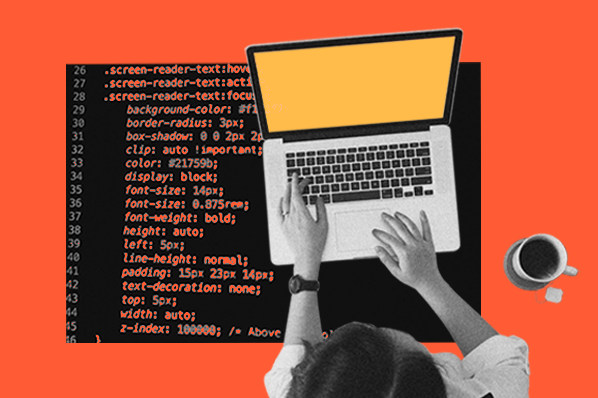Exactly How to Accomplish Sensational Outcomes with Specialist Web Design Practices
Exactly How to Accomplish Sensational Outcomes with Specialist Web Design Practices
Blog Article
The Comprehensive Guide to Crafting Aesthetically Appealing and Useful Website Design That Meets Individual Requirements
In today's digital landscape, the significance of crafting web designs that are both useful and aesthetically enticing can not be overemphasized. By focusing on user-centered design principles, developers can produce experiences that not just draw in however additionally preserve user rate of interest. Key aesthetic aspects such as positioning, balance, and comparison play a vital duty in this procedure, while the need of receptive layout ensures accessibility throughout different gadgets. The trip does not finish with preliminary design; ongoing screening and version are essential for refinement. What strategies can one employ to successfully balance these parts?
Comprehending User-Centered Style
At the heart of reliable website design exists the concept of user-centered style, an ideology that focuses on the requirements, preferences, and behaviors of individuals throughout the development procedure. This strategy entails detailed research study to comprehend the target audience, guaranteeing that the end product resonates with its intended customers. By integrating user responses at every stage, designers can create interfaces that are not just aesthetically appealing yet user-friendly and also useful.
User-centered style emphasizes compassion, needing developers to enter the individuals' shoes and consider their viewpoints. Methods such as individual personalities, journey mapping, and use screening are utilized to identify pain points and chances for improvement. This iterative procedure permits continuous refinement, as designers adjust to progressing customer requirements and technical innovations.
Incorporating user-centered layout leads to boosted user complete satisfaction and involvement, inevitably resulting in higher conversion prices and brand loyalty. It promotes a collaborative atmosphere where stakeholders, consisting of designers, developers, and customers, collaborate to attain a common vision. By placing users at the leading edge of the style process, companies can develop sites that not only satisfy organization purposes yet also provide rewarding and meaningful experiences for individuals.
Secret Concepts of Visual Layout
Reliable aesthetic design acts as the foundation for developing engaging and straightforward internet sites. It incorporates numerous vital concepts that lead developers in crafting cosmetically pleasing and practical user interfaces.
First, balance plays an essential role in achieving aesthetic consistency. Developers ought to distribute elements evenly across the layout to avoid frustrating users. This can be accomplished through in proportion or asymmetrical style methods.
Next, contrast improves readability and accentuates important components. By making use of varying colors, sizes, or forms, developers can produce focal factors that assist individuals through the content.
Additionally, placement is important for arranging details. Constant positioning of text and images cultivates a tidy format, boosting total navigating and individual experience.
Proximity additionally contributes to visual quality. Grouping relevant products with each other aids users in recognizing the partnership in between various components, making the interface more user-friendly.
Last but not least, consistency in layout elements, such as styles, shades, and typefaces, enhances brand identity and assists customers navigate the site a lot more easily. By incorporating these essential concepts of aesthetic design, web developers can develop user interfaces that are not only visually attractive yet likewise useful and user-centered.
Importance of Responsive Style
Receptive design is an essential facet of modern internet development, making sure that internet sites function perfectly throughout a selection of my company devices and screen dimensions. As the web landscape develops, the diversity of devicesâEUR" ranging from smartphones to tablet computers and desktop computer computersâEUR" demands a design technique that suits all customers.
Executing responsive design allows for a flexible layout that automatically adjusts based on the user's display measurements. This flexibility not just improves accessibility but additionally boosts functionality, as individuals can navigate and interact with the website effortlessly, regardless of their device.
Furthermore, receptive layout lowers the need for preserving numerous variations of learn the facts here now a website, improving updates and content administration. This effectiveness converts into cost savings and a more natural brand experience across platforms.
Enhancing Individual Experience
Individual experience (UX) is an essential part of internet layout, affecting just how visitors connect with an internet site and perceive its worth. A well-crafted UX ensures that users can navigate with ease, locate details conveniently, and attain their objectives successfully. The style needs to think about the individual's journey, from the minute they come down on the website to the conclusion of their desired action, whether that be making a purchase, enrolling in an e-newsletter, or accessing info.
Crucial element that boost UX consist of clear navigation, responsive formats, and interesting visual web content. Consistency in style aspects such as fonts, shades, and switches cultivates familiarity, making the site really feel cohesive. Additionally, maximizing tons times is important; users are much less likely to remain on a website that is slow to react.

Checking and Iterating Layouts
Examining and repeating designs are basic processes that adhere to the preliminary creation of a website, making certain that the customer experience stays at the forefront of any kind of adjustments. These phases involve collecting individual responses, assessing design efficiency, and making informed alterations to boost functionality and engagement.
Efficient testing can take different forms, consisting of usability testing, A/B screening, and individual studies. Functionality testing permits designers to observe actual individuals as they connect with the site, recognizing pain factors and areas for enhancement - web design. A/B testing, on the various other hand, compares two her response versions of a style element to figure out which executes better, supplying quantifiable data to overview decisions. Individual studies can offer qualitative understandings, catching individual views and preferences.
Constant model fosters an adaptive design method, where the website develops in reaction to customer habits and feedback. By devoting to extensive screening and version, designers can create a web site that not only meets visual criteria yet likewise delivers a satisfying and seamless user experience.

Verdict
In conclusion, efficient website design necessitates the integration of user-centered principles, essential visual style aspects, and responsive structures to develop engaging interfaces. By focusing on customer demands and executing constant testing and iteration, designers can refine their creations to enhance total contentment. The dedication to these techniques not just promotes a visually attractive aesthetic but also guarantees performance across diverse tools, inevitably adding to a favorable individual experience and enhanced engagement.
By focusing on user-centered layout principles, designers can create experiences that not only attract however also maintain individual interest.At the heart of reliable internet layout exists the principle of user-centered design, a philosophy that focuses on the demands, choices, and behaviors of customers throughout the advancement process. By positioning individuals at the forefront of the layout procedure, organizations can develop web sites that not only fulfill service objectives but also give rewarding and significant experiences for users.
By focusing on individual demands and choices, web designers can produce experiences that are not only aesthetically appealing however likewise useful, eventually promoting customer contentment and loyalty.
Customer surveys can supply qualitative insights, catching user beliefs and choices.
Report this page